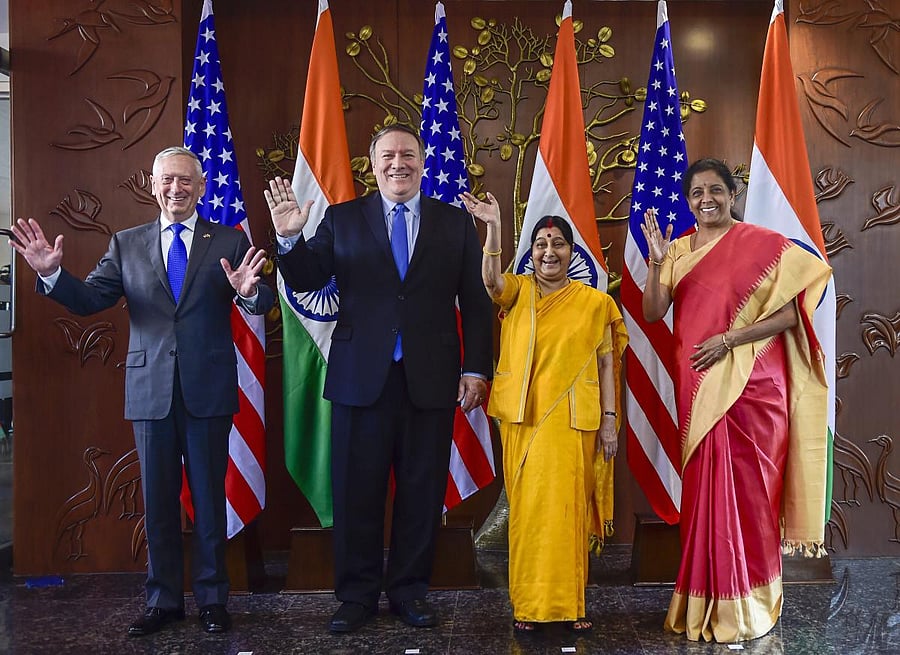
With India and the United States signing the Communications Compatibility and Security Agreement (COMCASA) during the recent ‘2+2’ bilateral dialogue between the foreign and defence heads of the two countries, military cooperation between the two countries, especially with regard to air and naval forces, will receive a significant shot in the arm. COMCASA will enable India to access secure US communications equipment that support encrypted data links and seamlessly connect to ground, air, surface and subsurface assets. India was reluctant to sign the Communication and Interoperability Security Memorandum of Agreement (CISMOA), the generic agreement that America’s allies have signed with it. CISMOA was tweaked to address Indian concerns and COMCASA was the outcome. An India-specific agreement, it is one of three agreements that the US considers ‘foundational’ to a strong military partnership. The first foundational agreement, the Logistics Exchange Memorandum of Agreement (LEMOA), which was signed in August 2016, allowed the Indian and US militaries to replenish from the other’s bases. With COMCASA, India and the US have taken another leap forward. Negotiations on the third ‘foundational’ agreement, Basic Exchange and Cooperation Agreement for Geospatial Cooperation, are yet to begin.
In effect, the signing of COMCASA will enable India to tap the full potential of the US-built military platforms it has and will procure in future. For instance, the Indian Navy’s US-built P-8I Long-Range Maritime Patrol aircraft, which is the world’s most effective submarine hunter, is at present operating at less than its full capability. This will change with COMCASA. It will enable India to get the full benefits of this force multiplier. At a time when China’s naval reach into the Indian Ocean is growing by leaps and bounds and its warships and submarines are docking at ports of countries in India’s immediate neighbourhood and beyond, COMCASA will strengthen India’s monitoring of PLAN’s movements in the Indian Ocean. The US’ cutting edge communication systems will provide India with a better situational picture of the Indian Ocean Region. India’s limited assets that were hitherto deployed to monitor the oceans can now be put to more efficient use elsewhere.
The 2+2 dialogue also saw the two sides agree to set up hotlines between their defence and foreign heads. They also decided to hold joint tri-services exercises. Together, the foundational agreements and the growing military engagement point to the making of an India-US alliance, not the sort of tightly-coupled alliances of the Cold War era, but of a more flexible variety suited to India’s strategic preferences.
